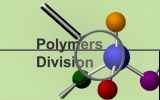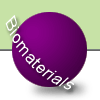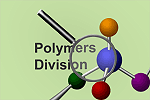Surface and Bulk Chemistry of Chemically Amplified Photoresists
|
| |
Introduction
|
 |
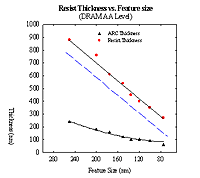
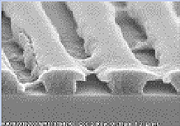 Feature size decreasing role of interfaces dominates processing
Need for measurements with nanometer chemical resolution
NEXAFS provides surface versus bulk chemical information
Interfacial, surface chemical changes,
components
Fundamentals for observed processing problems T-topping,
footing, pattern closure, top-loss
Feature size decreasing role of interfaces dominates processing
Need for measurements with nanometer chemical resolution
NEXAFS provides surface versus bulk chemical information
Interfacial, surface chemical changes,
components
Fundamentals for observed processing problems T-topping,
footing, pattern closure, top-loss
|
| |
Near Edge X-ray Absorption Fine Structure Spectroscopy (NEXAFS)
|
 |
| Daniel Fischer, Sharadha Sambasivan (Ceramics Division,
MSEL) NIST-Dow Beamline U7A, Brookhaven National Laboratory
|
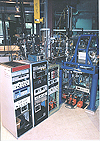 Features
C, N, O, and F bonds Features
C, N, O, and F bonds
Nondestructive
In situ processing
Automated, PC control
Surface and bulk information
|
| |
Interfacial and surface segregation
Polymer components
Photoacid generators
Base Additives
|
| |
Process Dependence
Immersion lithography impact (Emerging)
Airborne Contaminants
Processing delays
|
| |
| Method |

|
| |
| Photoacid (PAG) Segregation |
| |
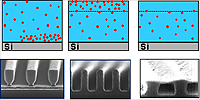 Detrimental to deprotection profile
Detrimental to deprotection profile
Susceptibility to contamination
Interaction with anti-reflective coating
|
| |
| Depth profiling |
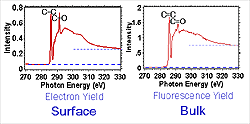
|
| |
| Polymer Blend Segregation |
 Non-uniform deprotection
Possible source for top-loss
Exacerbated with thinner films
Non-uniform deprotection
Possible source for top-loss
Exacerbated with thinner films
|
| |
Results
|
 |
| PAG Surface Segregation in model 248 nm system |
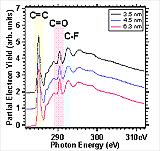 NEXAFS sensitive to carbonyl group in resist
NEXAFS sensitive to C-F bonds in the PAG
NEXAFS sensitive to carbonyl group in resist
NEXAFS sensitive to C-F bonds in the PAG
|
| |
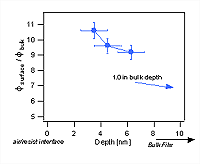 Degree of segregation decreases with depth
Observed in 248 nm and 193 nm photoresists
Degree of segregation decreases with depth
Observed in 248 nm and 193 nm photoresists
|
| |
| Polymer Blend Segregation in 157 nm resists |
| |
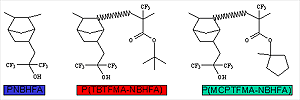
|
 |
| |
NIST Contributors
|
 |
|
Vivek Prabhu*
Eric Lin
Wen-li Wu
Erin Jablonski
Bryan Vogt
Christopher Soles
Ronald Jones
David VanderHart
Dan Fischer
Sharadha Sambasivan
Michael Wang
Sushil Satija
|
| |
Collaborators:
|
 |
| Dario Goldfarb(1) , Marie Angelopoulos (1), Hiroshi Ito (1)
Ralph Dammel (2) Frank Houlihan (2) |

 |
| |
| |
| |
| |


